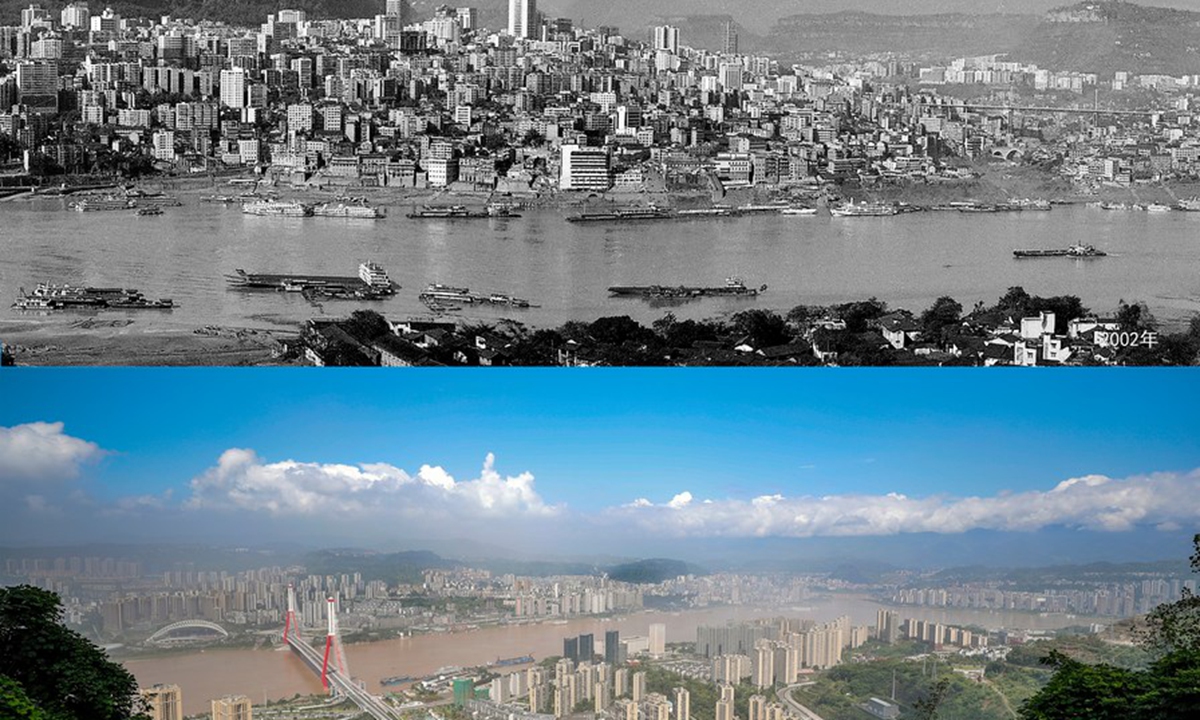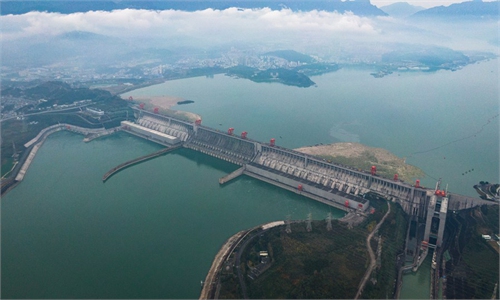
Combination photo shows Wanzhou District, southwest China's Chongqing Municipality in 2002 (top, file photo provided by Chongqing Three Gorges Migrants Memorial) and on July 19, 2020 (bottom, photo taken by Huang Wei), respectively.
A new series of books focusing on archaeological excavation of the Zhongba ruins, one of the most important sites in Three Gorges Reservoir Region of the Yangtze River, was released on Sunday in Beijing.
The ruins are located in the Three Gorges Reservoir Area, Southwest China's Chongqing Municipality whose history dates from the Neolithic Age to the Qing Dynasty (1644-1910), as China News Service reported. The main part of the site is reduced to an island with an area of about 7,000 square meters by long-term erosion of the river, according to Science Press, the press of the books in Beijing.
The series of four books, titled Zhongba, Zhong County after the location of the ruins, introduce the 79 soil layers found at the site, which have been divided according to the soil property and have produced relics from all of China's dynasties.
More than 200,000 cultural relics including pottery wares, bronze wares and porcelain wares have been excavated from the ruins site.
The ruins were also involved in the production of salt
The site has also enriched the categories of archaeological sites in China by providing evidence that confirms a type of salt production that was previously only known from historical records.
More than 3.9 million characters long, the books are one of the most important comprehensive archaeological excavation reports for the construction of the Three Gorges Water Conservatory Project.
The books were edited by the Sichuan Provincial Cultural Relics and Archaeology Research Institute.
The ruins had been excavated since 1997, and after the unearthing work was finished, researchers spent more than 10 years editing the series, an employee of the press told the Global Times.

